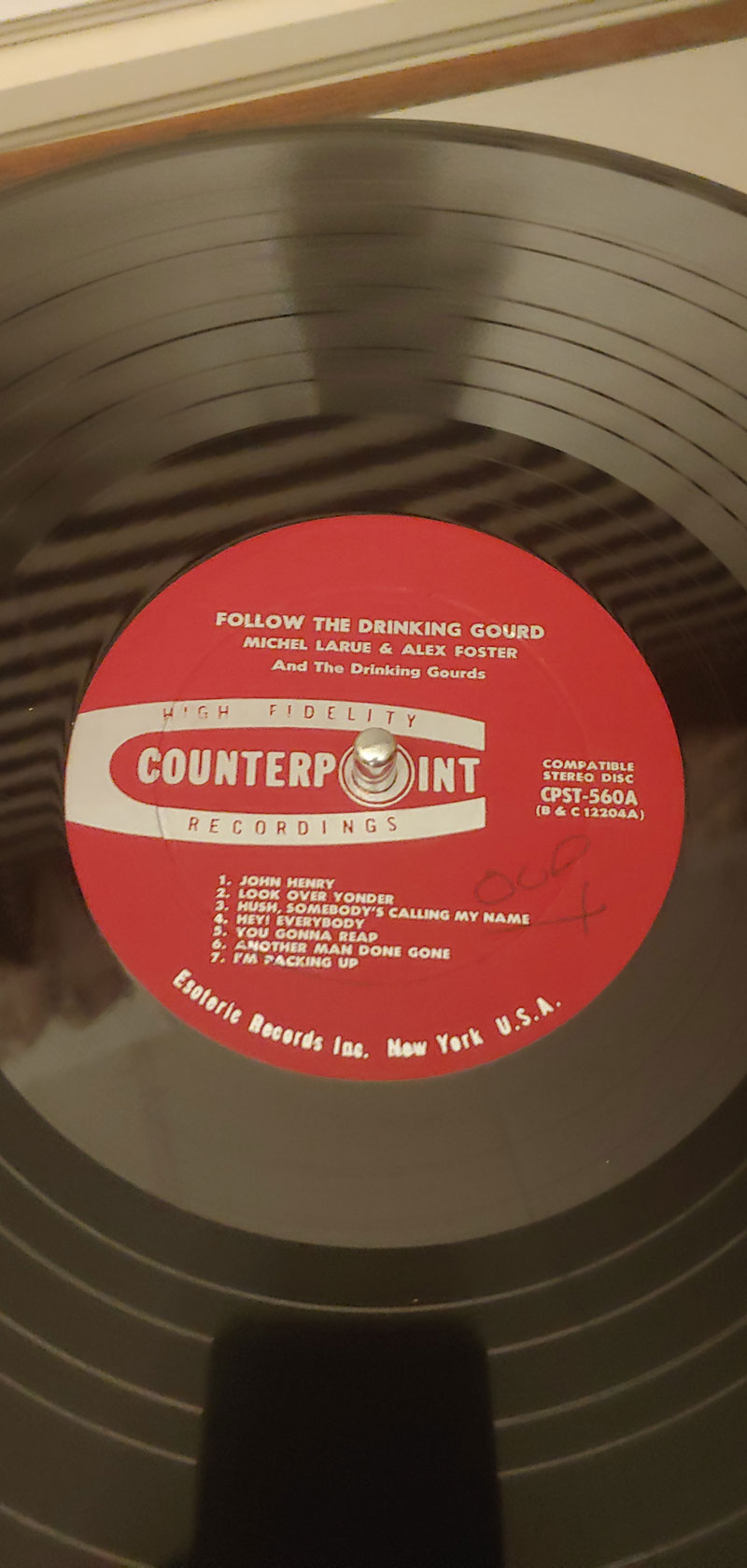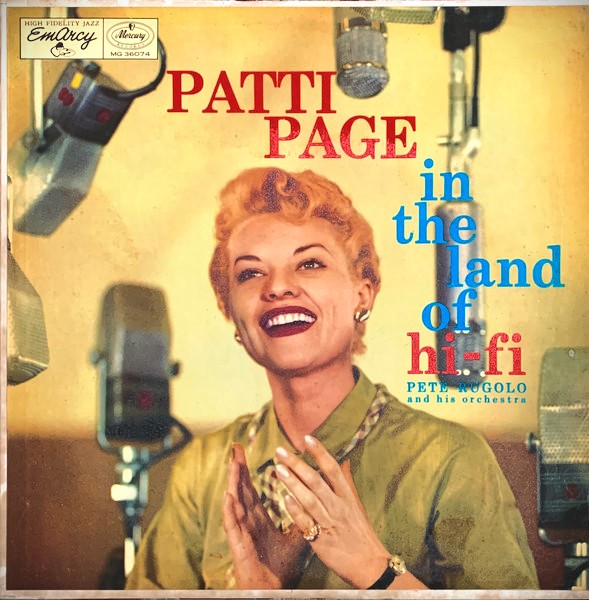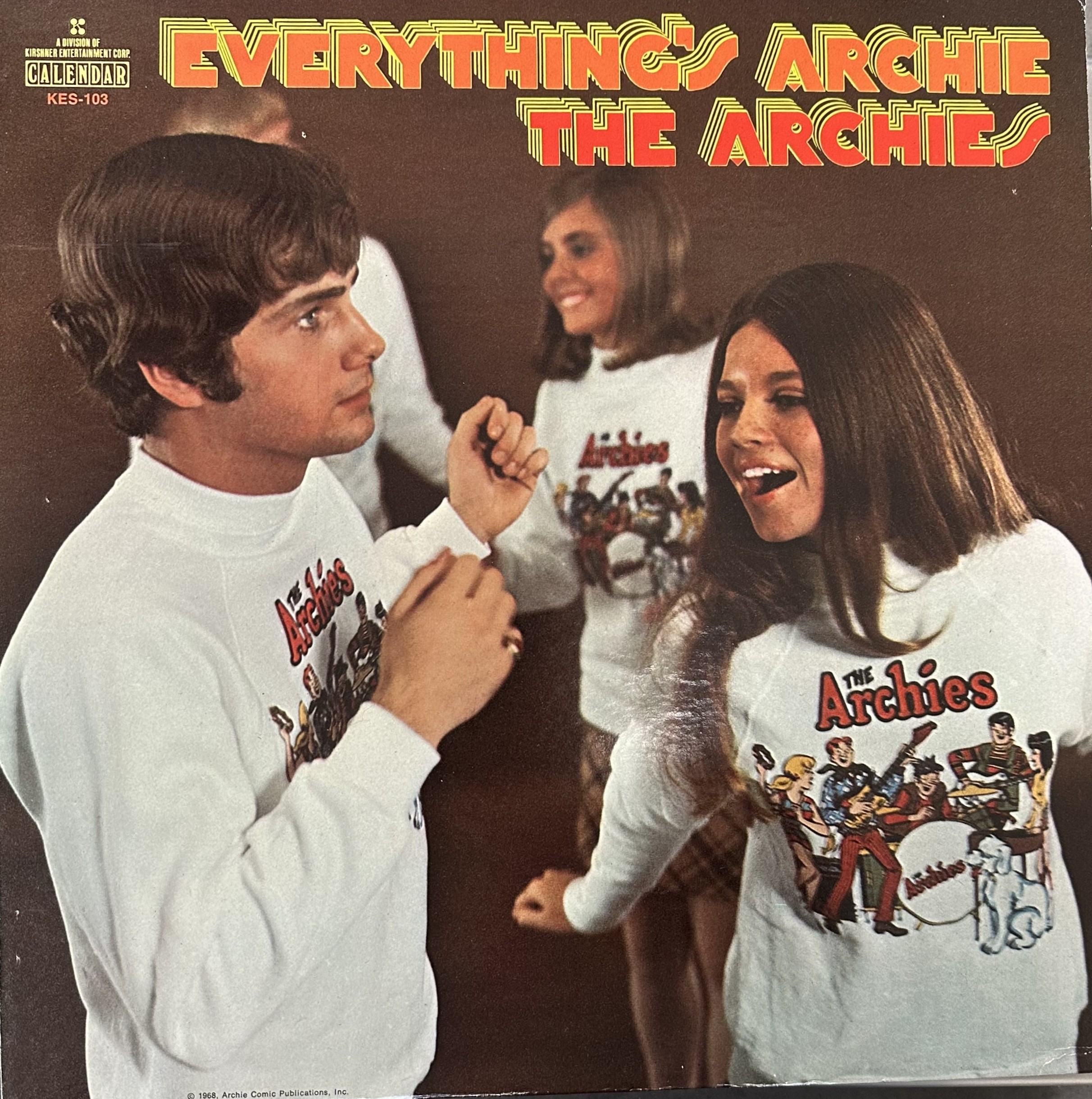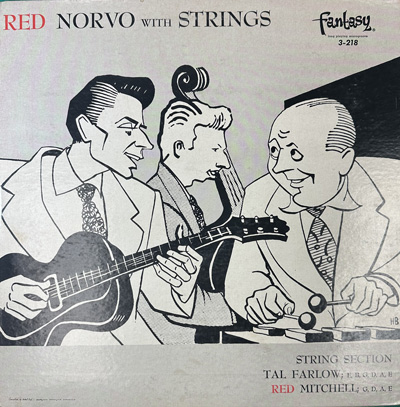When I joined Positive Feedback to write about albums from my overflowing collection, I decided that it would be best if I wrote about easily obtainable albums. In a short time I realized that I don't own a click-of-the-mouse record collection. The records that I love to play and write about are very simply rare. I also realized that I'm writing for a high end audio magazine, for a group of people who understand that hard work pays off. It takes genuine effort to coax good sound from a high end audio system, and it takes a genuine effort to build a diverse and exciting record collection.
One record that takes some effort to obtain is Follow The Drinking Gourd (Counterpoint CPST 560) by Michel Larue and Alex Foster. Clean stereo copies are not at all common. This is a 1958 album by black folk duo and two uncredited backup musicians dubbed The Drinking Gourds. The Drinking Gourds play guitar and bongos. Some might call it a blues album, but, as the album's cover tells us, it's a collection of "American negro folk music." The first time I heard it was in the late 80s when my late friend, Tom Null, played it for me on his magnificent Infinity 4.5 speakers. To say that I was blown away is an understatement. The guitar and the snare drum on "Raise A Ruckus" were so lifelike that they caused a major upheaval in my audiophile life. Today I own three copies.
Very little is known about Larue and Foster. Outside of the liner notes on this, their only LP, information is sketchy at best. Whether they performed in front of an audience or whether they only got together to make this record is an unsolvable mystery. The liner notes say "they created a sensation on the stage and in concert halls," but the same notes also raise the question of whether they played in any nightclubs.
As far as I'm concerned, the album's magic starts on side one cut three. "Hush, Somebody's Calling My Name" is a mid tempo blues song that creates a very cool mood, and, like most of the album, it's a sonic stunner. The song opens with an enthusiastically strummed hollow-body electric guitar on the left side of the soundstage, the two singers somewhat off to the left, and some closely mic'd bongos are on the hard right. The instruments sound incredibly real, as they are presented in their naked reverb-free glory. The vocals have a touch of reverb.
The next cut is "Hey Everybody." This cut is exciting, and the stereo imagery of the prior cut remains the same. This cut also adds hand claps on the left that are startling in their realism, as are the bongos on the right. This is analog ear candy at its best. As I'm writing, this cut is spinning on my direct drive Micro Seiki DQ50 turntable. The Grado Reference cartridge is feeding a late 70s Sherwood receiver, and the Sherwood is driving my Sennheiser HD650s. The sound is incredible. In fact, the sound is so good that I'm just a little afraid to play it on my larger and more sophisticated audio system.
Side two cut one, "March On," is a lot of fun with its hand clapping and enthusiastic bongo playing. It's an action-packed and uplifting way to open the second side, and the sound quality is awesome.
Side two cut three is "Raise A Ruckus." This is my favorite cut. It's a celebration of gospel music and hifi. It's fast, furious, and it draws you in like nothing you've ever heard before. The guitar player, who's still parked on the left, is ultra inspired and he's overdriving his little amp, thus creating some of the best sounding distortion I've ever heard. Michel and Alex are singing their hearts out, and the bongo player on the right is now playing drums. It is impossible to sit still when this cut is playing. We've all heard you-are-there sound, but on this cut they are here! As I'm listening to my Sherwood driven HD650s, I'm reminded of my friend's vintage Infinity speakers. The guitar and the snare drum are as incredible as they were when I first encountered this album.
Side two cut four is "Driving Steel." It's another mid-tempo blues song that is very entertaining, and, unlike the other cuts, it features Larue on piano. And, I should add, his piano sounds very good.
Side two cut five is "Hold On." It's my second favorite cut on the LP, and the energy is much higher than the previous cut. Laurue's lead vocal is powerful, the musicians are on fire, and I love those bongos!
The album closes with the excellent title cut. It's a mournful blues number that brings the temperature down, and the listener, or at least this listener, back to earth.
I've been loving this record for 35+ years. It continues to provide me with the same level of excitement that it did when I first heard it. As a collector of 60s folk music, I'm no stranger to repurposed gospel and blues songs, but I've never heard another folk record that treats acoustic blues quite the same way that this album does. It's the bluesiest folk album I've ever heard, rather than the folkiest blues album I've ever heard.
Regarding the sound of this LP on my playback gear, I played this LP on my two analog front ends and these are my results: Typical of small record companies of this era, the quality of the pressing requires a cartridge that minimizes surface noise. The Grado Reference plays it tonally correct with fully saturated colors, and it's ultra dynamic. The Sherwood receiver that the Grado is feeding has a remarkably clean and detailed phono section. The Grado Reference is not as quiet or as suave as my Denon DL160 moving coil, which yields more of a "master tape" sound. The Denon, which currently resides on my belt drive Luxman PD300 turntable, which feeds an EAR 864 tube preamp, sounds a little less saturated color wise. This combo reveals the tape hiss, and the instruments have greater separation across the wide soundstage. This combo also has less surface noise. I find it interesting that both of my systems play this LP in a completely convincing manner, and yet they sound different. Perhaps it's mostly the differences between my belt drive and direct drive turntables. It's hard to determine which is closer to the truth. Access to the master tape would make the accuracy of my turntables easier to ascertain, but as I only have the record to go by, I will remain undecided as to which system plays this LP best.




































